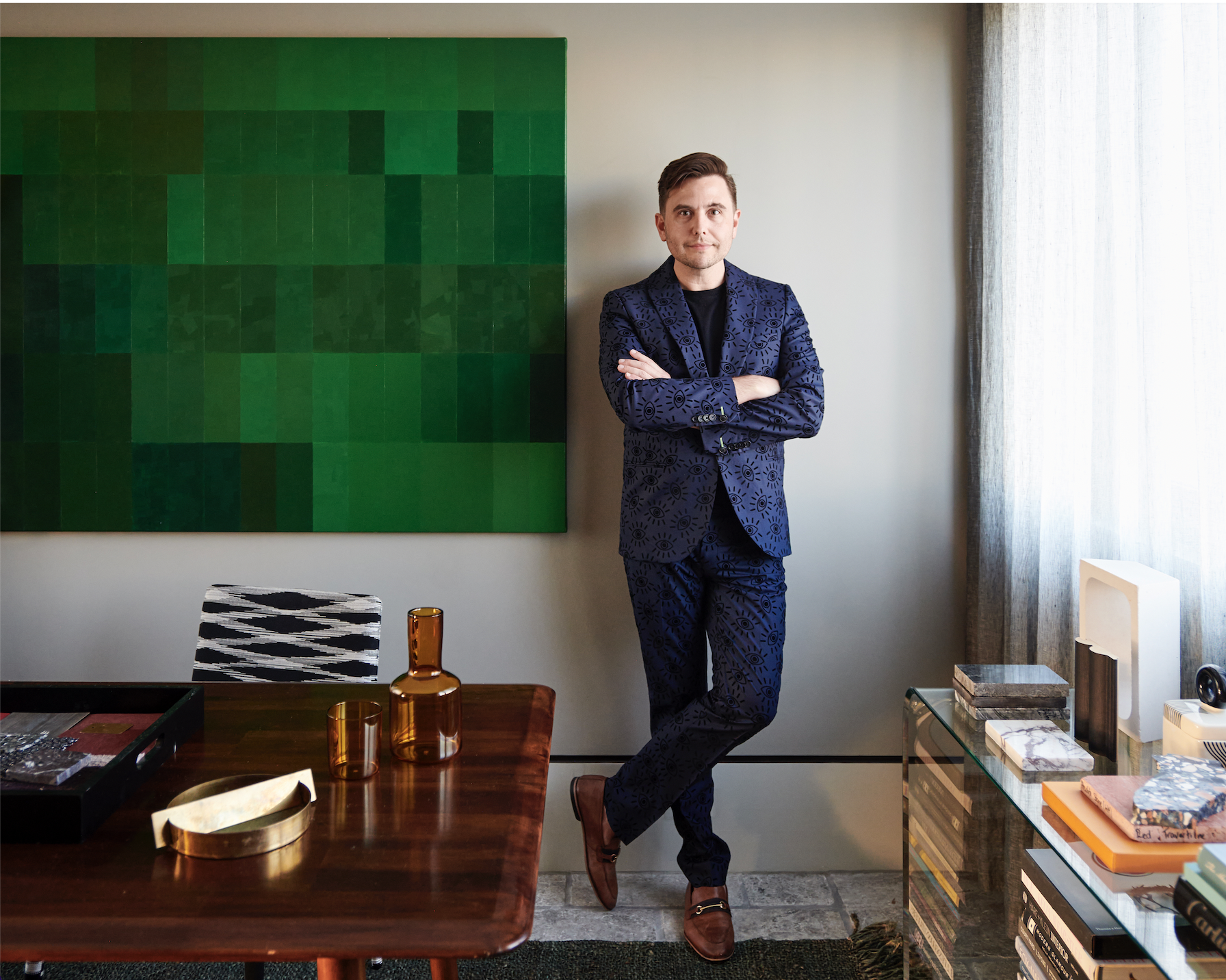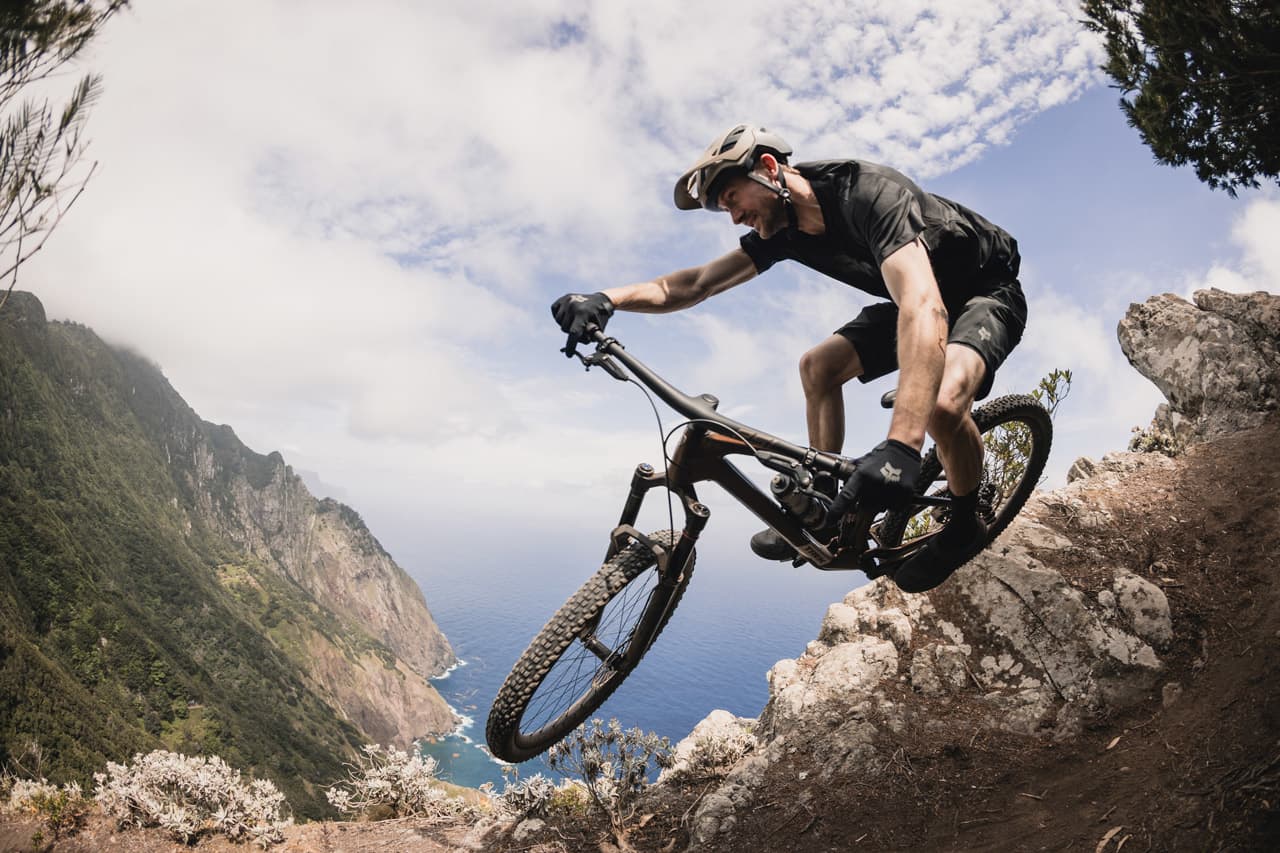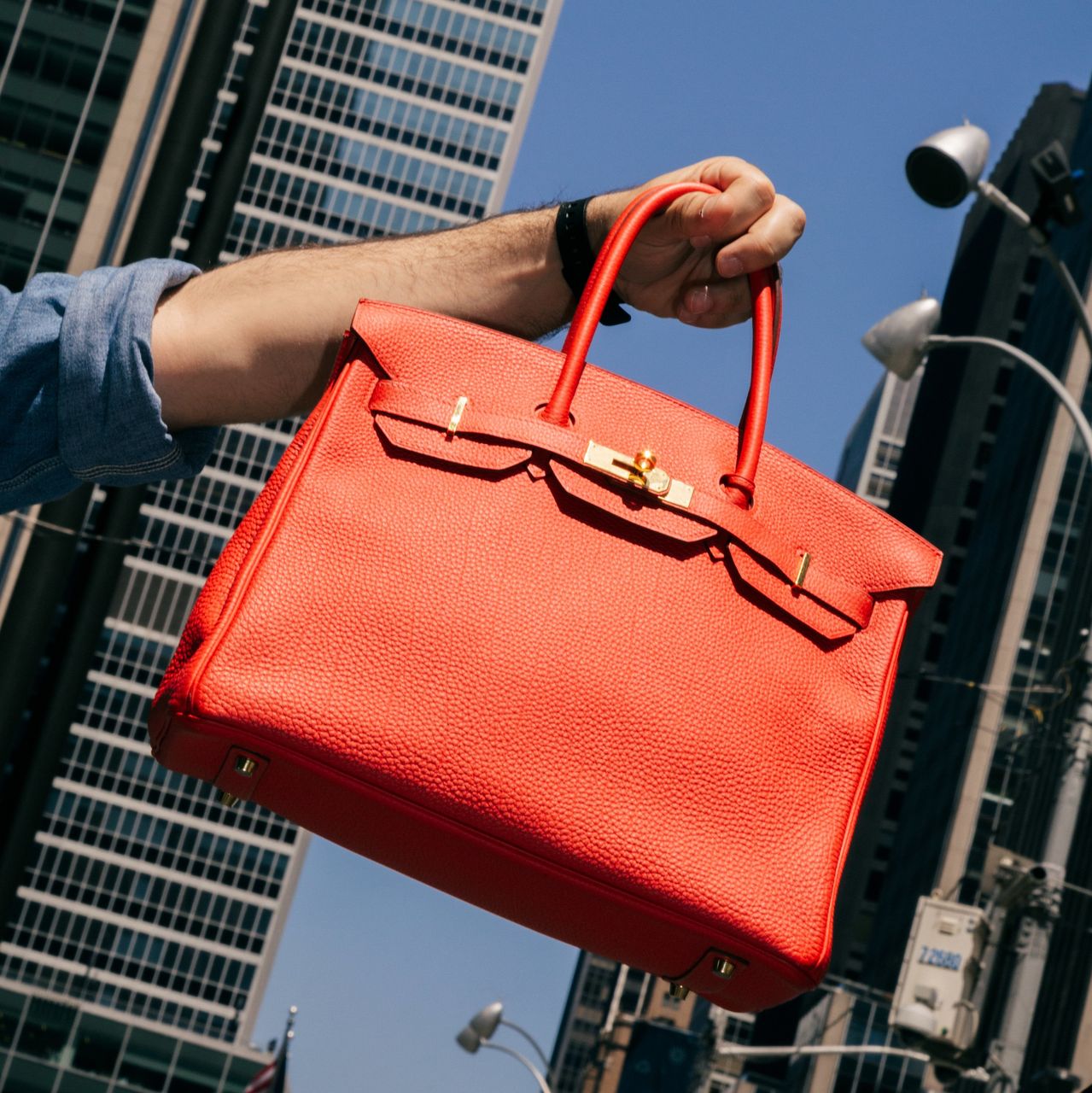The young Sydney designer banishing beige
Jewel-like colours add depth and personality to this architect-designed inner city apartment
T here are people who enjoy living in gallery-inspired, zen-like spaces in shades of antique white and linen finished with layers of soft grey and beige materials.
And then there’s Nic Kaiko.
The young interior designer burst onto the Sydney market more than a decade ago with a thirst for colour and a love of ‘dynamic eclecticism’, a style he describes as a mix of contemporary and timeless design. Since then, he has created his own signature style based on rich colour skilfully imbued with pattern, working across residential and hotel environments.
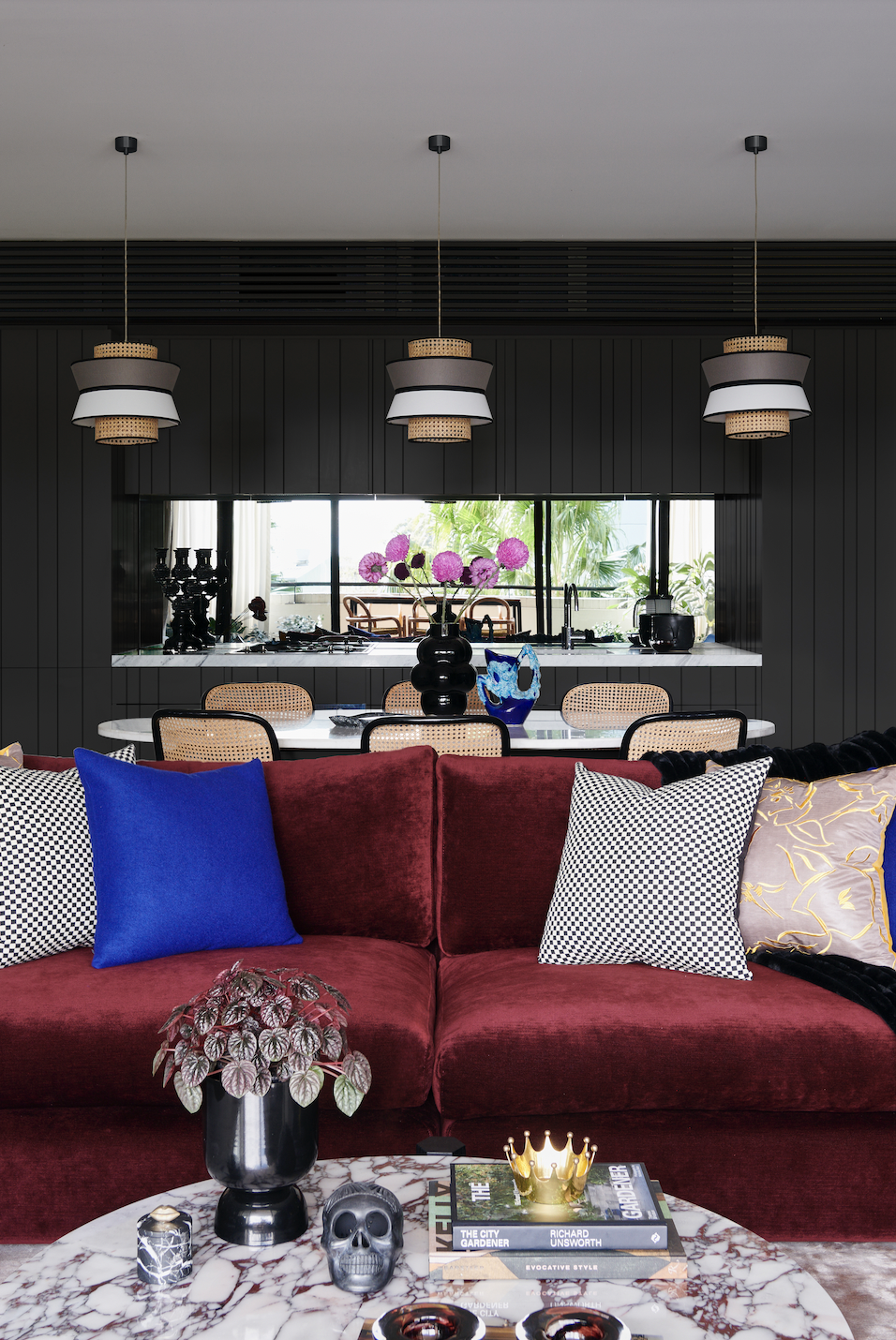
But despite his experience in hospitality and hotel interior design, when he had the opportunity to create his own space to call home in Sydney’s Waterloo, Kaiko paused.
“Working for myself, I knew I could be a little more flexible but it’s tricky being your own client,” he said. “You can’t just pick up things you like and hope they work together. There needs to be a rationale behind your choices. You can’t have too many ideas.”
Want more stories like this? Subscribe to Kanebridge Quarterly magazine here.
Kaiko had wanted to buy into the Casba building in Waterloo’s Danks Street precinct since it opened almost 10 years ago. A collaboration between architects BLP and SJB, and interior designers BKH, the building is defined by its access to two parallel streets, linked by a central courtyard with a reflection pool at its heart. At street level, it is host to a suite of high end retailers, including the new Winnings Appliances showroom, now also home to Spence & Lyda and Rogerseller, in the heart of the popular food and art precinct.
“It has beautiful public spaces and it was really activated on the ground floor,” Kaiko says. “The architecture and build was really high quality.”
Apartments were well thought out, with careful consideration given to light, ventilation and the natural flow between spaces. After securing an apartment in the building, he set to work. Because the execution of the design and build was so well done, Kaiko says there was not a lot that needed to change with the floorplan.
“The layout is perfect,” he says. “The bedrooms face east and the two bathrooms and the kitchen are really well planned. In terms of adjustments, which is tricky in apartments, it wasn’t necessary.”

Taking inspiration from the silver travertine floor tiles and drawing on his experience in hotel design, Kaiko opted to paint the walls in soft grey tones, separated by a thin black line at picture rail height.
“The stripe on the walls came from when I used to do hotel work,” he says. “The bedroom particularly feels like a hotel and the layout lends itself to having that hotel feel.”
Floor-to-ceiling semi sheer curtains in the bedroom continue the sophisticated hotel vibe, borrowing an old design technique of extending the curtains beyond the window frame to make the room feel larger.
The foundation materials were already decidedly neutral when he bought the apartment, which Kaiko decided to work with, including the flooring.
“The floors are beautiful. The travertine is cross cut and they are laid in that chateau style with big and small pieces,” Kaiko says. “They were fit for purpose and they continue from the public spaces into the bedrooms and then onto the balcony.
“We always try to make the existing work.”
To bring some personality into living spaces, the apartment is punctuated by rich tones of cobalt, forest green and a deep crimson, including an Arpège sofa in a colour reminiscent of the 2023 Pantone Colour of the Year, Viva Magenta.
“Cobalt is my favourite colour and I wanted to make that work. In terms of the concept, it was really more about colour blocking and keeping the background palette pretty neutral,” Kaiko says.
An abstract artwork in gradient colour by Brisbane-based artist Andy Harwood plays a central role in the living space, providing depth to the room and drawing together the equally intense shades of cobalt and deep pink.
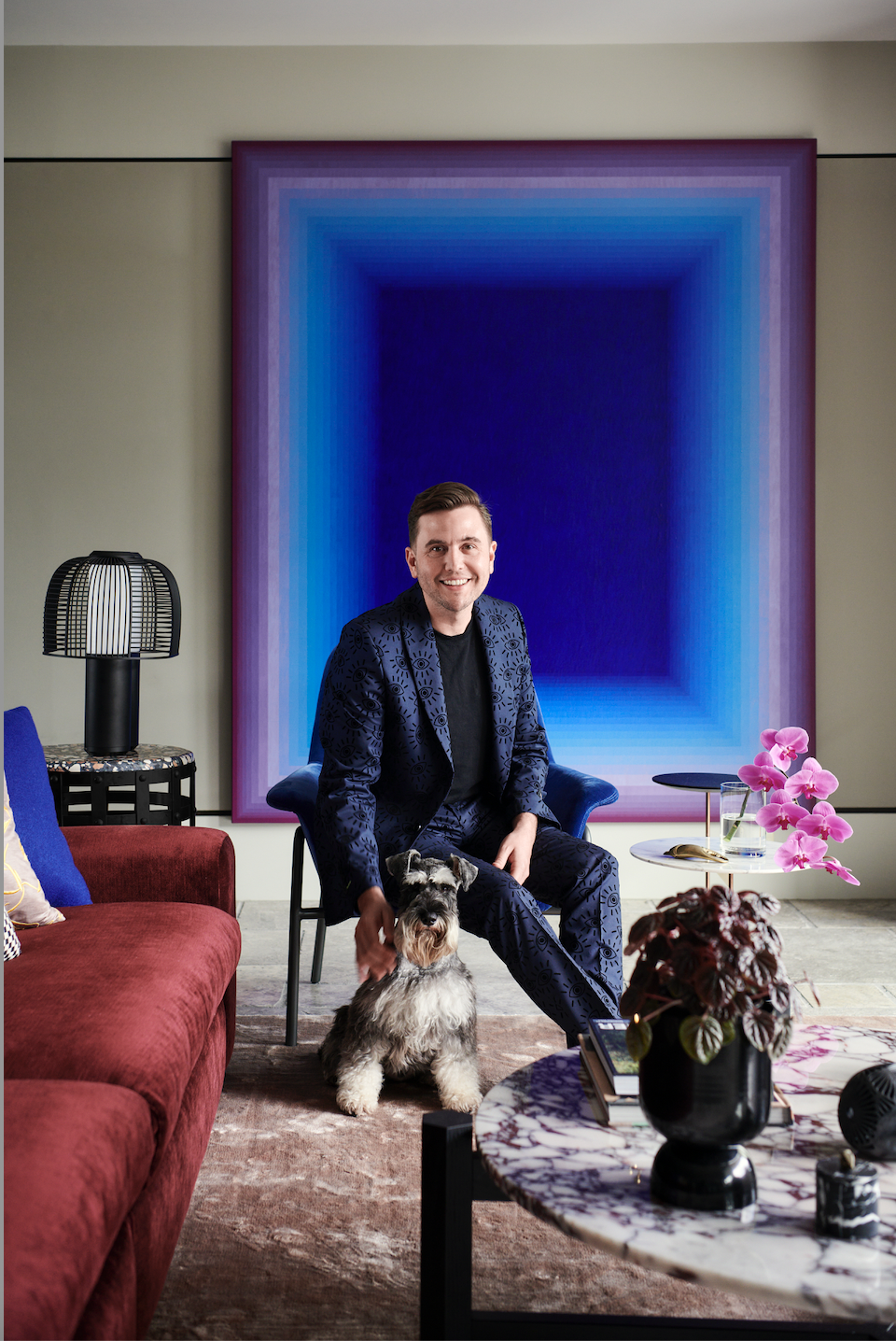
A veined marble coffee table from Zuster provides a visual link between the stronger crimson and the quieter neutrals while a touch of rattan in the kitchen pendant lights and the Thonet dining chairs lighten the mood.
Pinstriped black lines ensure the look is urbane and contemporary, without being too heavy.
For Kaiko, it’s not just a design statement. As all good interiors should, the apartment reveals the personality of its owner.
“This project gives people a good indication of my loves,” he says. “Some people think colour is not high end but some of the great designers across the world use colour.
“A lot of people are afraid of using it and have a tendency to think ‘If I do everything white, it will look more high end’ but it can look incredibly pedestrian.”
No chance of that happening here.
This stylish family home combines a classic palette and finishes with a flexible floorplan
Just 55 minutes from Sydney, make this your creative getaway located in the majestic Hawkesbury region.
Audible alerts at the gate call out travellers trying to board earlier than they should
TUCSON, Ariz.—Passengers in Boarding Group 1 were filing onto American Airlines Flight 2721 to Dallas Friday when an ominous sound went off at Gate B11: dip-dip-dip-DOOP. The gate agent delivered the bad news. The passenger was in Group 4. She asked him to wait his turn.
The same sound—the last-gasp sound from AirPods running out of juice, or sad “Game Over” music for an old videogame—went off minutes later. Dip-dip-dip-DOOP.
“You’ll be boarding with Group 5, sir,” the agent said. Five more passengers were turned back before Group 2 was called.
American Airlines is cracking down on line jumpers. All major U.S. airlines do their best to maintain boarding order since priority boarding is a perk for frequent fliers , credit-card holders and big spenders, and is often available for purchase. But American is the first to develop an automated system that instantly flags offenders.
The airline is experimenting at gates in Tucson, Albuquerque, N.M., and Washington, D.C., as part of a broader upgrade to American’s boarding technology. The airline has tested the alerts on more than 4,500 flights this month and will expand to several more cities this year, with an eye to taking it systemwide if no major issues, such as slower boarding, arise at larger airports. The airline says early feedback from fliers and gate agents has been encouraging.
The idea for automated policing grew out of complaints from travellers fed up with line jumpers and the employees who feel their wrath. In particular, top-tier frequent fliers gripe about too many passengers in the first boarding group, says Preston Peterson, American’s managing director of customer experience.
Group 1 is reserved for travellers in first class, certain business-class tickets and American’s executive platinum status. Active duty military members with military I.D. are also allowed. Groups 2 and 3 are similarly elite.
“They’ve earned that [priority] boarding group and they want access to it,” Peterson says.
The biggest perks, of course: plenty of overhead bin space and no worries about the dreaded threat of gate-checking your bag.
A clear difference
The new system promises smoother boarding for passengers and gate agents. I flew to Tucson International Airport to try it out. I put the airline’s traditional boarding to the test at my departure gate in Phoenix. Could I slither into an earlier boarding group? I was in Group 4 but breezed right through with Group 2.
Gate agents tell me it’s hard to monitor passengers’ group numbers manually, big plane or small, especially with boarding-pass readers where travellers plunk their phones face down.
American isn’t telling passengers about the test before their flights, and that’s on purpose. It doesn’t want them to change their behaviour simply because they’re being watched.
Chad Vossen, a 46-year-old chief creative officer for a video-marketing company in Virginia, knew nothing of the test until he and a colleague tried to board in Group 6 instead of Group 8 for a flight to Phoenix. They had done it on other American flights and others, in hopes of avoiding gate-checking their camera equipment.
His first thought when the dip-dip-dip-DOOP went off: “Wow, that doesn’t sound good.”
Vossen says it triggered the sounds losers hear on “Hollywood Squares” or “ The Price is Right .” (American says the sound effects are generic videogame clips and is still testing different sounds.)
He stepped out of line and laughed about getting caught. Vossen says he sees the change mainly as a way to get travellers to pay up for priority boarding. He’s unlikely to pay, but says he will probably finally sign up for American’s loyalty program. Members get complimentary Group 6 boarding regardless of status. That’s one group ahead of regular Main Cabin customers without status.
Peterson, the American customer-experience executive, believes most passengers aren’t out to game the system.
“I think most people just see a line and go, ‘Oh, we’re boarding,’” he says.
Toot toot, hey, beep beep
About one in 10 passengers on American’s test flights have boarded out of order, the airline says. Not all want to cheat the system. Some are travel companions of those with better boarding positions. American’s policy allows them to board together if they’re on the same reservation but didn’t assign the same boarding group. (The alert still goes off, but the agent can easily override it.) And the airline says its system doesn’t flag pre-boarders, like those with wheelchairs.
Exceptions excluded, I counted as many as seven passengers on one flight boarding in the wrong group; on another, it was zero. That math no doubt changes at a busy hub like Chicago or Dallas. So does the potential for tension.
The passengers I saw seemed to take the ejection in stride, moving aside and waiting for their group. One even apologised to the gate agent.
The test is already having an impact beyond the walk of shame. Peterson says the airline has noticed some passengers jumping out of line after seeing fellow fliers turned away. He says he witnessed the same thing at a non-U.S. airline that began policing boarding groups.
Peterson’s ultimate goal: zero boarding group alerts. “I don’t want anyone to be dinged,” he says.
For now, passengers should expect a cacophony at American gates employing the new tech. Not all alerts will send you to the back of the line. Hear a slot-machine-like sound when you scan your boarding pass? You’re probably seated in an exit row.
Even if you get the dreaded you’re-in-the wrong-boarding-group alert, it could be a mistake. A passenger in Group 8 was taken aback Friday afternoon when it sounded on her flight to Phoenix.
“That did not sound good at all,” she said to the flight attendant.
“You failed at ‘Pac-Man,’” the agent joked.
She was in the right place. The agent hadn’t yet flipped the switch in the app to her group.
This stylish family home combines a classic palette and finishes with a flexible floorplan
Just 55 minutes from Sydney, make this your creative getaway located in the majestic Hawkesbury region.









